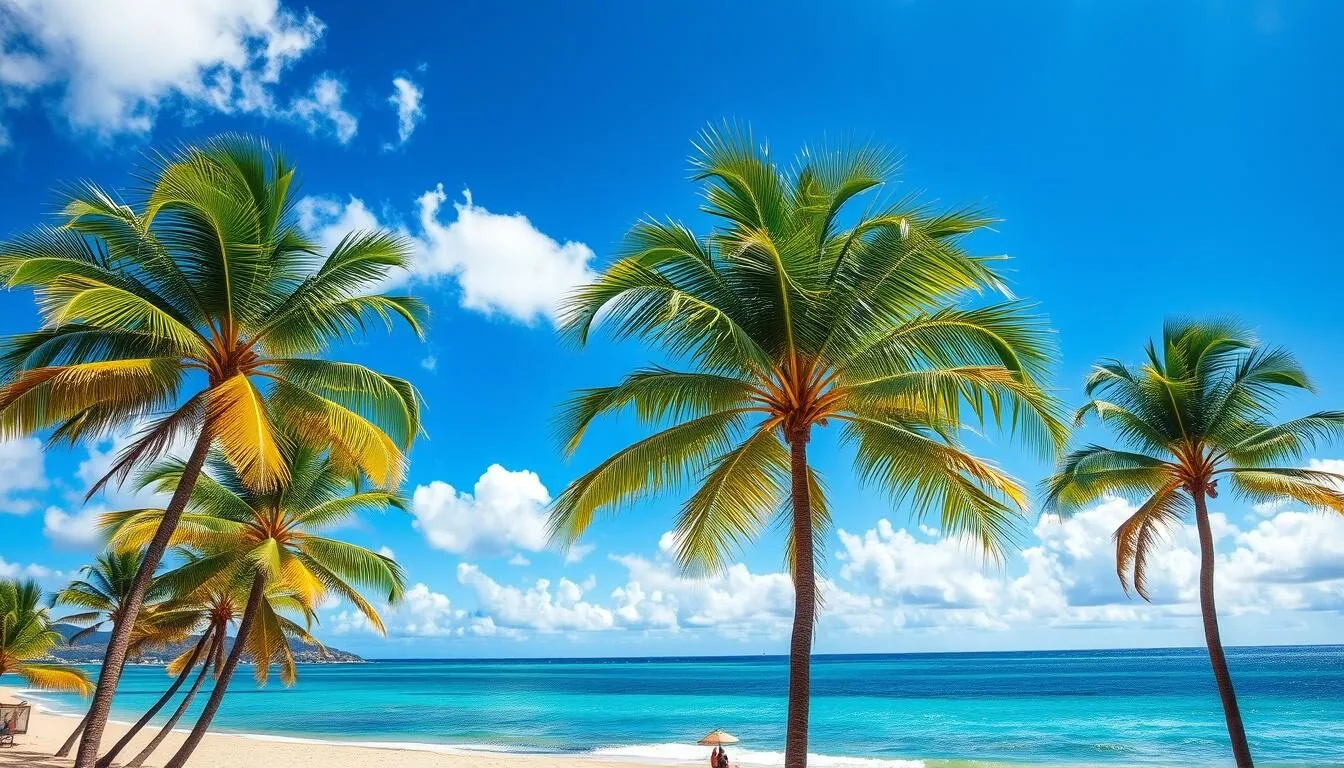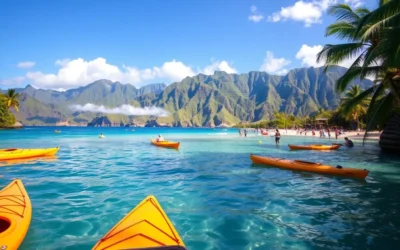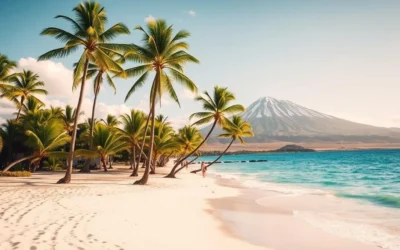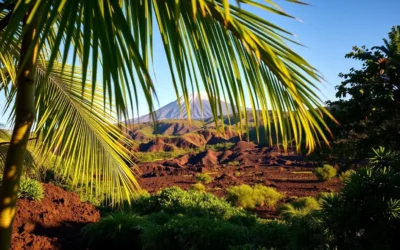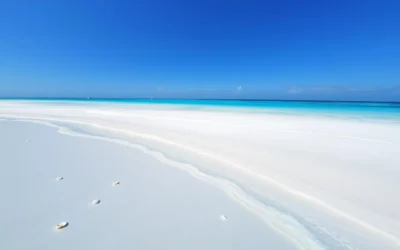✓ Accommodations ✓ Flights ✓ Rental Cars ✓ Tours & Activities
Imagine yourself strolling along Waikiki Beach, feeling the warm tropical sun on your skin, and enjoying the gentle ocean breeze. Planning a trip to Honolulu requires understanding the unique weather patterns that make this Hawaiian paradise special year-round.
The median daily high temperature in Hawaii is around 82°, with summer highs averaging 85° and “winter” months averaging 78°. Understanding these nuances will help you pack appropriately and maximize your enjoyment of this tropical destination.
The ideal time to visit Honolulu depends on your travel preferences and priorities. Whether you’re seeking sunny beach days, optimal surfing conditions, or whale-watching opportunities, timing your visit strategically can enhance your overall experience.
Understanding Honolulu’s Year-Round Climate
Honolulu’s year-round climate is influenced by its geographical location and trade winds. The city’s tropical savanna climate means that the temperature varies little throughout the year, making it an ideal destination for travelers seeking consistent weather conditions.
The Eternal Spring of Oahu
Oahu is often referred to as having an “eternal spring” due to its mild temperatures, ranging from 70°F to 85°F (21°C to 30°C) throughout the year. This pleasant climate makes it an attractive time to visit, regardless of the season. You can enjoy outdoor activities like hiking, surfing, or simply relaxing on the beach without worrying about extreme temperatures.
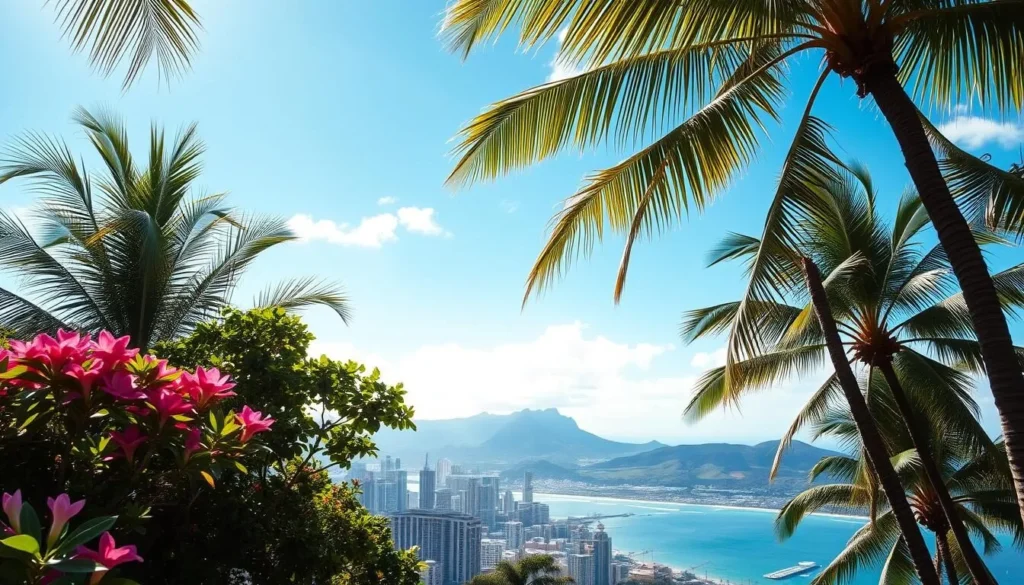
Trade Winds and Their Impact
Hawaii is blessed with gentle trade winds, which are the cooling breezes that come from the northeast. These winds work to keep the humidity at bay, making the climate even more comfortable for visitors. When planning your time visit to Honolulu, understanding the trade wind patterns can help you choose the right accommodations and make the most of your visit Hawaii experience. Trade winds play a crucial role in maintaining the pleasant climate of the islands, providing natural air conditioning that keeps humidity levels comfortable.
- Gentle trade winds from the northeast cool the islands and maintain comfortable humidity levels.
- Understanding trade wind patterns can help you choose accommodations that benefit from these cooling breezes.
- The interaction between trade winds and Oahu’s mountain ranges creates distinct microclimates across the island.
Weather Patterns Throughout the Year in Honolulu
To make the most of your visit to Honolulu, it’s vital to understand the city’s weather patterns throughout the year. Honolulu experiences a unique climate that is characterized by mild temperatures and moderate humidity levels throughout the year.
Temperature Variations by Season
The temperature in Honolulu varies slightly from season to season. Summer months (June to August) are the warmest, with average highs around 85°F (29°C), while winter months (December to February) are the coolest, with average lows around 65°F (18°C). Spring (March to May) and autumn (September to November) offer pleasant temperatures, making them ideal for outdoor activities.
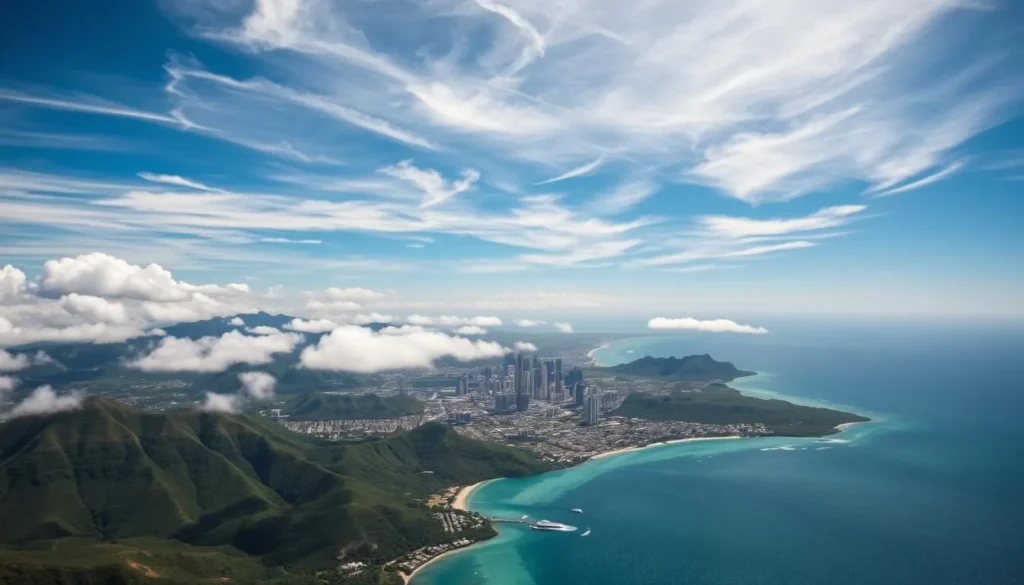
Rainfall Patterns on Oahu
Rainfall in Honolulu is more frequent during the winter months, with the majority of the annual rainfall occurring between December and March. However, even during the wettest months, the rain showers are often short-lived and followed by sunshine. The summer months tend to be drier, making them ideal for beach activities and outdoor explorations.
- The wettest months are typically from December to March.
- The dry season, from June to September, is perfect for outdoor activities.
Hurricane Season Considerations
It’s essential to be aware of hurricane season when planning your trip to Honolulu. Hawaii’s hurricane season runs from June 1 to November 30, coinciding with the Atlantic hurricane season. Although direct hits are rare due to the islands’ geographic isolation, it’s crucial to stay informed.
Key points to consider during hurricane season include:
- The peak months for potential hurricane activity are August and September.
- Consider purchasing travel insurance that covers weather-related disruptions.
- Modern forecasting provides several days’ notice of potential hurricane threats, allowing for adjustments to travel plans.
The probability of a major storm affecting your Honolulu vacation remains low, especially compared to Caribbean destinations. Nonetheless, staying informed and prepared is always a good practice.
Honolulu, Oahu, Hawaii: Best Months for a Weather-Savvy Trip
When planning your trip to Honolulu, understanding the best time to visit can make all the difference. The island’s climate is characterized by mild temperatures throughout the year, but there are distinct periods that are more suitable for certain activities.
Winter Months: December to February
Winter in Honolulu brings slightly cooler temperatures, with average highs ranging from 78°F to 82°F. While it’s a great time for surfing on the North Shore, the South Shore remains pleasant for other activities. You can enjoy festive events and cultural celebrations during this period, making it a unique experience.
Spring Months: March to May
Spring is a lovely time in Honolulu, with temperatures gradually warming up. It’s an ideal period for outdoor activities like hiking and snorkeling, as the weather is pleasant and crowds are relatively smaller compared to the peak summer months. You can enjoy the beauty of the island as it blooms during this season.
Summer Months: June to August
Summer is the peak tourist season in Honolulu, with warm temperatures and minimal rainfall. Daytime highs average 85-88°F, while evening lows rarely drop below 70°F. The trade winds provide natural cooling, making the heat comfortable. It’s the best time for beach activities, surfing, and snorkeling due to calm ocean conditions and excellent water visibility.
During the summer months, you can enjoy a range of activities, from snorkeling in Hanauma Bay to attending outdoor cultural events. However, it’s also the busiest time, with higher accommodation prices and larger crowds. Planning ahead can help you make the most of your visit.
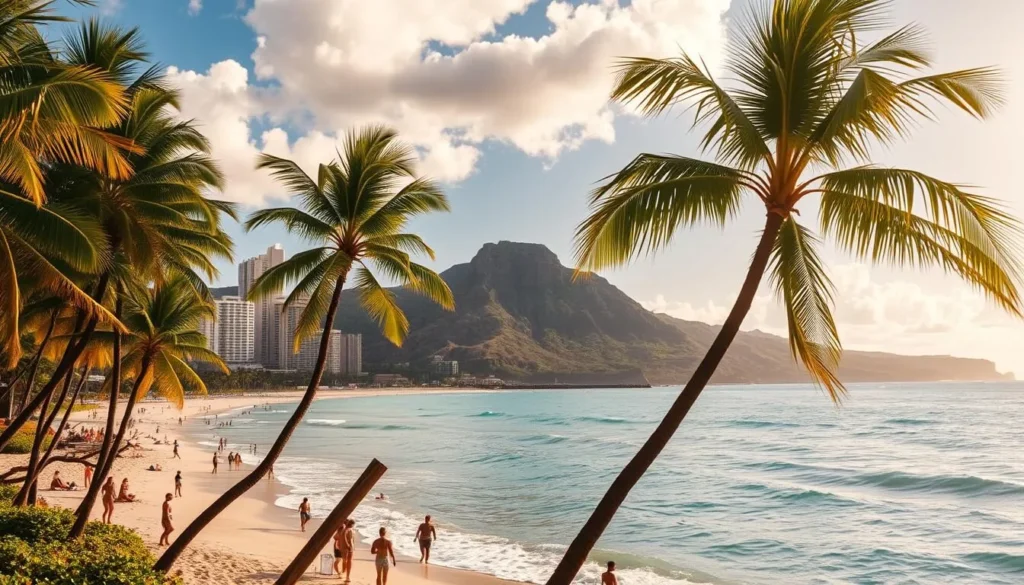
Understanding the characteristics of each season can help you plan a weather-savvy trip to Honolulu, ensuring that you make the most of your time on the island.
Fall in Honolulu: The Hidden Gem Season
Fall in Honolulu is a hidden gem, offering a unique blend of pleasant weather, fewer tourists, and lower prices. This shoulder season brings numerous benefits for travelers looking to experience the best of Oahu without the crowds.
September to November Weather Benefits
The fall season in Honolulu is characterized by warm temperatures, averaging 85°F (29°C), and plenty of sunshine. September and October are particularly pleasant, with comfortable humidity levels and gentle trade winds. You can expect minimal rainfall during this period, making it ideal for outdoor activities like hiking, surfing, or simply enjoying the island’s beautiful beaches.
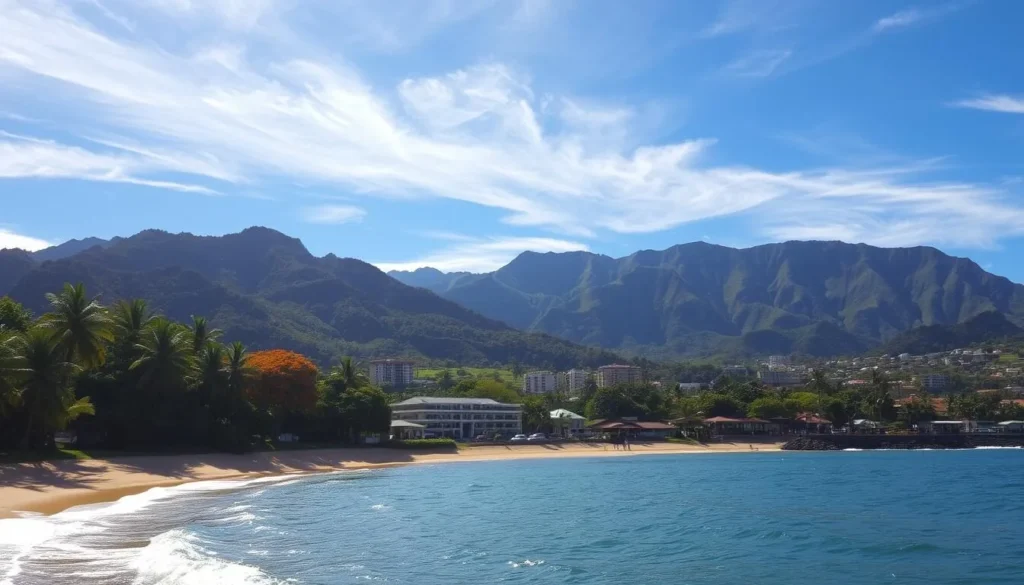
Why Fall Might Be Your Best Choice
Visiting Honolulu during the fall offers several advantages. With reduced crowds, you can enjoy shorter wait times at popular attractions like Diamond Head, Hanauma Bay, and Pearl Harbor. Additionally, hotel rates tend to drop by 15-30% compared to the summer peak season, making it a more affordable time to visit. Airlines often offer promotional fares, and you’ll find it easier to secure restaurant reservations and enjoy more personalized service at resorts and tour operations.
| Benefits | Summer | Fall |
|---|---|---|
| Crowd Levels | High | Low |
| Hotel Rates | Peak Prices | 15-30% Lower |
| Weather | Hot and Humid | Warm and Pleasant |
Ocean Conditions and Water Activities by Month
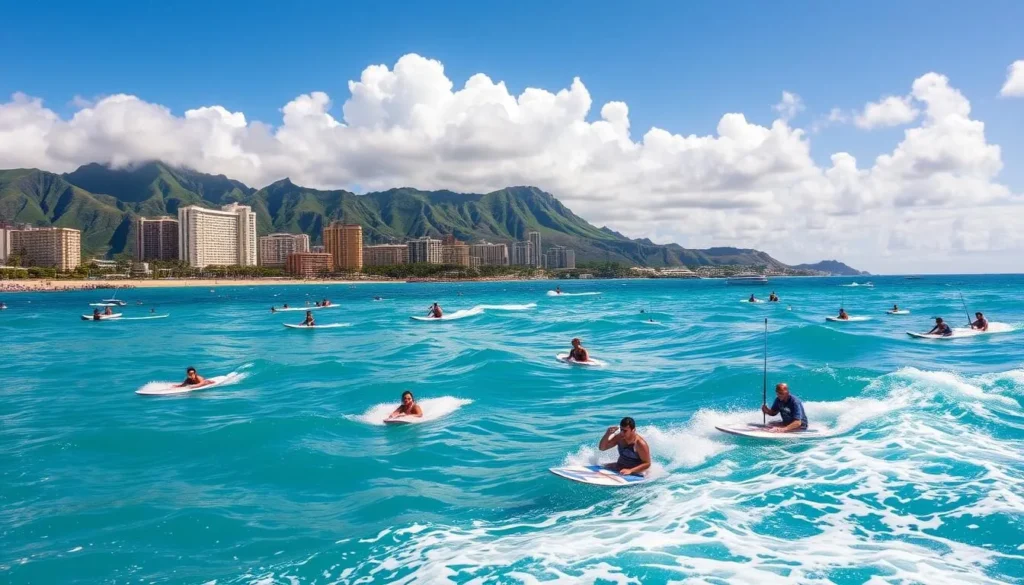
The ocean conditions in Honolulu vary significantly throughout the year, impacting the best times for swimming, surfing, and snorkeling. Understanding these conditions is key to enjoying your water activities. Whether you’re looking to surf the big waves or snorkel in calm waters, Honolulu has something to offer every time of the year.
Water Temperatures Throughout the Year
The water temperature in Honolulu remains relatively warm throughout the year, ranging from 72°F to 82°F (22°C to 28°C). Summer months see the warmest temperatures, making it ideal for swimming and snorkeling. In contrast, the winter months bring slightly cooler waters, but it’s still pleasant for most water activities.
Best Months for Surfing in Honolulu
For surfers, the best time is during the winter months (December to February) when the north shore experiences large swells, creating ideal conditions for big wave surfing. Popular spots like Pipeline and Waimea Bay become hotspots during this period. However, it’s worth noting that these conditions can be dangerous for inexperienced surfers.
Ideal Times for Snorkeling and Diving
The best months for snorkeling and diving around Honolulu are typically April through October, when water visibility is highest and ocean conditions are calmest. Summer months offer peak underwater visibility, often exceeding 100 feet at popular dive sites. Early morning snorkeling generally offers the best experience, with calmer waters and more active marine life.
Some of the top snorkeling spots include Hanauma Bay, Shark’s Cove (during summer), and Electric Beach, each offering unique encounters with marine life. Seasonal ocean conditions affect different locations differently, so it’s good to plan according to the season.
Navigating Crowds and Prices in Honolulu
The key to a stress-free and budget-friendly trip to Honolulu lies in understanding the ebb and flow of tourist traffic and prices. As you plan your visit, it’s essential to consider the factors that influence these fluctuations, ensuring you make the most of your travel experience.
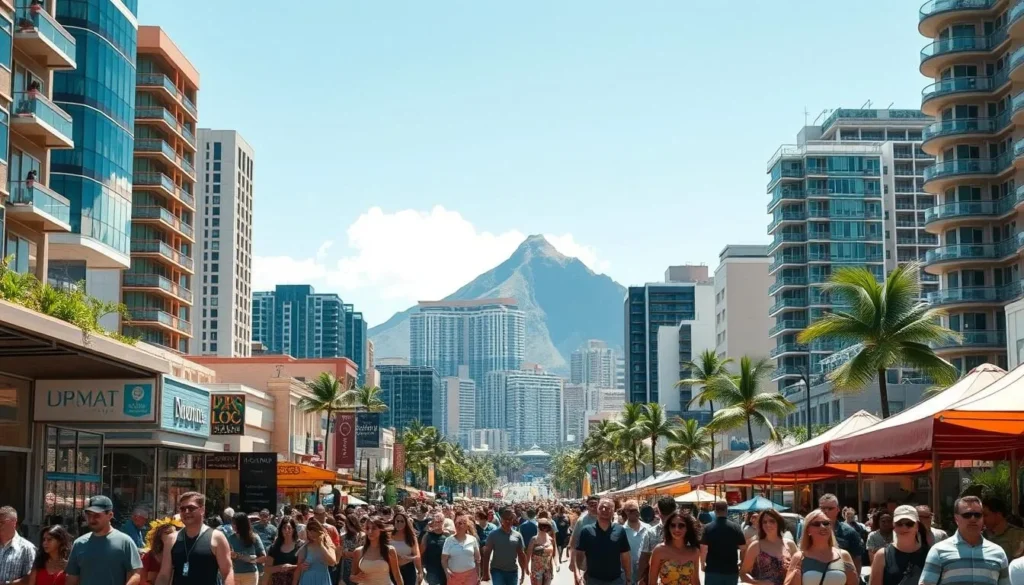
Peak Tourist Seasons on Oahu
Peak tourist seasons in Honolulu are typically characterized by large crowds and higher prices for hotels and other travel-related services. These periods usually coincide with major holidays and summer vacations when families and travelers flock to the islands. Understanding these peak seasons can help you plan your trip during less busy times if you prefer smaller crowds and lower costs.
Finding the Sweet Spot: Low Crowds, Good Weather
For those seeking a more relaxed experience with fewer crowds and pleasant weather, the shoulder season is an ideal time to visit. During these periods, you can enjoy comfortable temperatures and lower prices for accommodations. The months of May and September to October are particularly advantageous, offering a balance between good weather and fewer tourists.
Budget-Friendly Months to Visit Honolulu
If your primary concern is cost, consider visiting Honolulu during the budget-friendly months. Typically, May, September, October, and the first half of December offer the best value, with hotels providing rates that are often 20-40% lower than peak season prices. By planning your trip during these off-peak periods, you can enjoy significant savings and a more relaxed atmosphere, making for a more enjoyable visit. This period is considered the best time to visit for travelers on a budget.
Seasonal Events and Activities in Honolulu
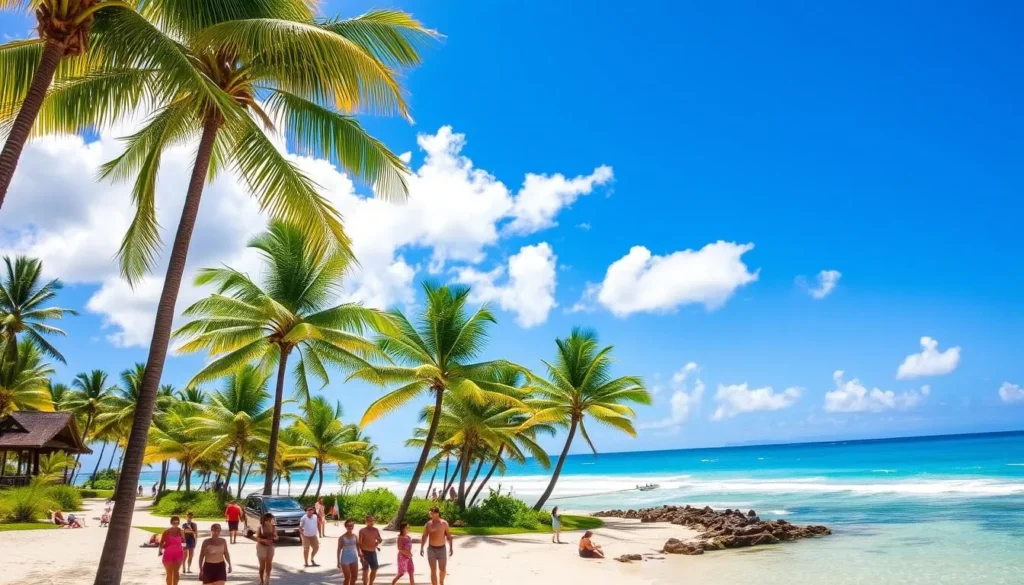
With a rich cultural heritage and a lively atmosphere, Honolulu hosts a wide array of events and activities across different seasons. Whether you’re looking for cultural experiences, outdoor adventures, or simply a fun day out, Honolulu has something for everyone.
Winter Events and Festivals
Winter in Honolulu brings a variety of events and festivals that celebrate the holiday season. You can enjoy the Honolulu City Lights, a festive atmosphere that transforms the city into a winter wonderland. Additionally, the Honolulu Festival, typically held in March, often has its preparations and some events starting in late winter, showcasing Hawaiian culture through music, dance, and art.
Spring and Summer Celebrations
As spring and summer arrive, Honolulu’s event calendar gets even more exciting. The Memorial Day Weekend marks the beginning of summer and is celebrated with various events. Summer is also the time for outdoor concerts and movies under the stars, as well as cultural festivals like the Pan-Pacific Festival, which celebrates the cultural diversity of the Pacific nations.
Fall Festivities on Oahu
Fall in Honolulu is a lovely time, with comfortable temperatures and a range of festivities. You can enjoy the Honolulu Pride celebrations, which take place in October, promoting equality and inclusivity. Additionally, the Pearl Harbor Remembrance Day is observed in December, but some related events may occur in late fall, honoring the historic event.
Year-Round Activities in Honolulu
Regardless of the time of year you visit, there are plenty of activities to enjoy in Honolulu. You can hike up Diamond Head Crater for breathtaking views, explore the historic Pearl Harbor National Memorial, or experience a traditional luau. Cultural institutions like the Bishop Museum and Iolani Palace offer enriching experiences. Moreover, Honolulu’s famous beaches, such as Waikiki and Ala Moana, are perfect for relaxation. The city’s farmers markets, like the Kakaako Farmers Market, operate year-round, offering local produce and artisanal goods. Events like First Friday in Chinatown and the Honolulu Night Market occur monthly, showcasing the city’s vibrant cultural and artistic scene.
Month-by-Month Breakdown of Honolulu Weather
To make the most of your time in Honolulu, it’s essential to know what the weather is like each month. This breakdown will help you plan your trip according to the activities and conditions you prefer.
January-March Highlights
During the winter months, Honolulu experiences slightly cooler temperatures, averaging 78°F to 70°F. January and February offer better value for your trip due to lower prices after the holiday season. Winter is also a great time for surfing on Oahu’s North Shore.
April-June Highlights
As spring progresses, the weather becomes more pleasant, with temperatures ranging from 82°F to 68°F. This period is ideal for outdoor activities like hiking and snorkeling. You can enjoy lots of sunshine during these months.
July-September Highlights
Summer brings warm weather, with temperatures often reaching the mid-80s. It’s a peak tourist season, so expect larger crowds. The new year celebrations have passed, but you can still enjoy summer festivities and events.
October-December Highlights
October offers pleasant weather with minimal rainfall and comfortable temperatures. The Hawaii Food & Wine Festival takes place this month. As winter approaches, December brings holiday events and decorations, making it a magical time despite higher prices and larger crowds due to the holidays.
Conclusion: Planning Your Weather-Perfect Trip to Honolulu
As you’ve learned, Honolulu’s climate is pleasant year-round, but certain periods offer more advantages than others. When planning your trip, consider your priorities: optimal weather, lower prices, or smaller crowds. The shoulder seasons, mid-April to early June and September to mid-December, often provide the ideal balance.
Weather-savvy travelers note that even during the “rainy season,” Honolulu’s leeward location means less precipitation. For the best weather, April-May and September-October are typically the most reliable months. By considering these factors, you can plan a weather-perfect trip to Honolulu that suits your needs.
The above is subject to change.
Check back often to TRAVEL.COM for the latest travel tips and deals.
